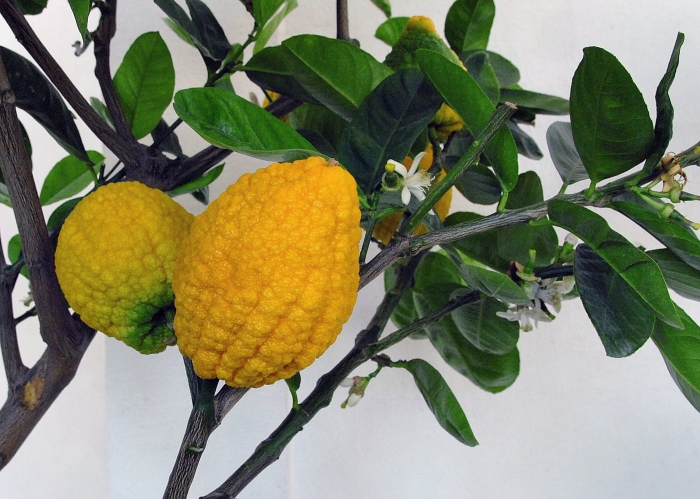Citron
(Citrus medica)
Citron (Citrus medica)
/
/

Johann Werfring
CC BY-SA 3.0













Estimated Native Range
Summary
Citron is valued for its unique fruit, which is used in culinary and medicinal applications, particularly for its rind. It is also grown ornamentally for its fragrant leaves and attractive flowers. In cultivation, it requires full sun, medium water, and well-drained soils. While it is frost-sensitive, it can be grown in containers in cooler climates and moved indoors during cold weather. The Citron’s sensitivity to frost and its somewhat erratic growth pattern can be challenging for gardeners. It is not commonly used in mass plantings but rather as a specimen tree or in a mixed border for its unique appearance and fragrant properties.CC BY-SA 4.0
Plant Description
- Plant Type: Tree
- Height: 12-30 feet
- Width: 8-15 feet
- Growth Rate: Slow
- Flower Color: White
- Flowering Season: Spring, Summer, Fall, Winter
- Leaf Retention: Evergreen
Growth Requirements
- Sun: Full Sun
- Water: Medium
- Drainage: Medium
Common Uses
Bee Garden, Bird Garden, Butterfly Garden, Edible*Disclaimer: Easyscape's listed plant edibility is for informational use. Always verify the safety and proper identification of any plant before consumption., Fragrant, Hummingbird Garden, Potted Plant
Natural Habitat
Subtropical and tropical regions of the Himalayas and Southeast Asia, particularly in forest understories and partially cleared areas
Other Names
Common Names: Bitter Orange, Fingered Citron, Buddha’s Fingers, Buddha’s Hand, Medischer Apfel, Zitronatzitrone, Cidro, Cédrat, Cédratier, Cedrato
Scientific Names: , Citrus medica, Citrus limetta, Citrus medica var. sarcodactylis, Citrus sudachi, Citrus lumia, Citrus hassaku, Citrus odorata, Citrus nana, Citrus medica var. ethrog
GBIF Accepted Name: Citrus medica L.